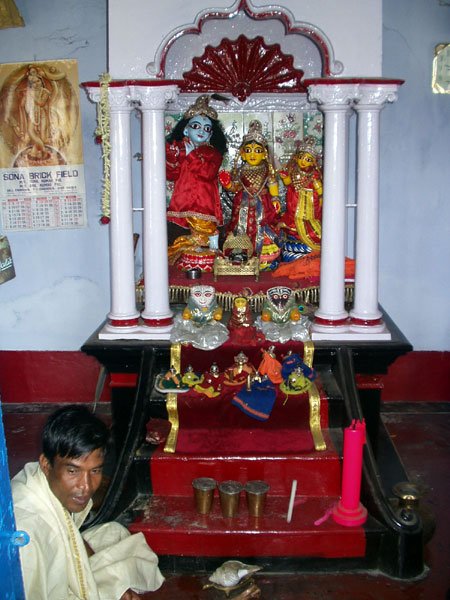
There are two temples in Shantipur. One is in the village where ISKCON participates in the Shantipur festival on the disappearance day of Madhavendrapuri. And, the other temple is in the city. These pictures were taken the next morning in Shantipur after the festival.

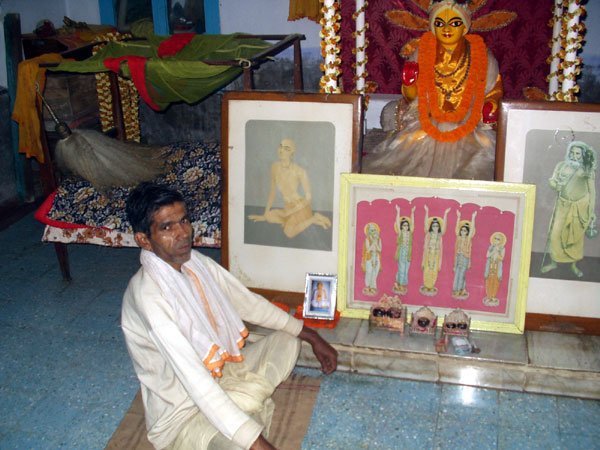
While attending the festival 2005, we inquired about the Saligram Sila that Sri Advaita Acarya worshiped to call Lord Caitanya. The priest, a descendant of Advaita Acharya, said that the saligram was buried under the altar 200 years ago for it's protection. I didn't believe the story so I returned the next morning after mangal arati with His Holiness Amilavilas Swami. He spoke with a different pujari who agreed to bring the saligram silas out for us to see. They are not on the altar for darshan normally. The picture with the two nrsmhadeva silas and three others are from the temple in the village. The pujari said that one of the two nrsmha silas has responsible for the descent of Lord Caitanya. The pujari gave us the tulasi leaves from the saligrams as prasadam. We honored some of them, and I took one home and put it on my altar. I also had brought my Bala Gopal sila and the purjari bath him along with the nrsmha silas.
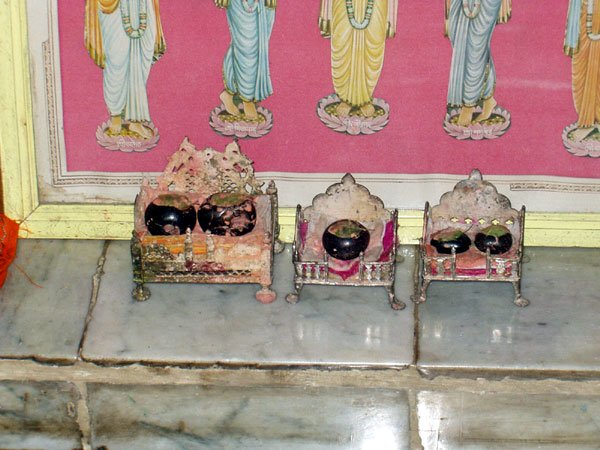
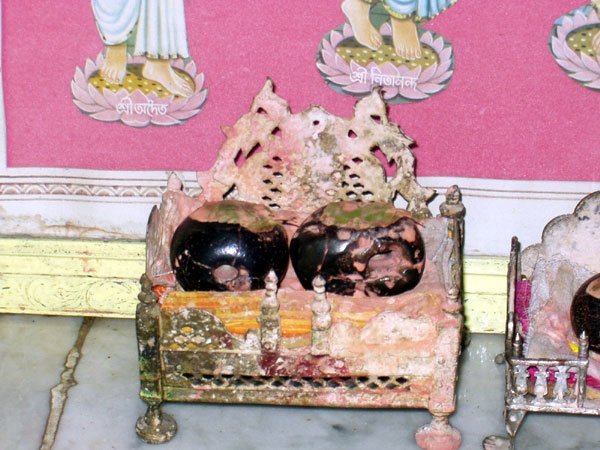
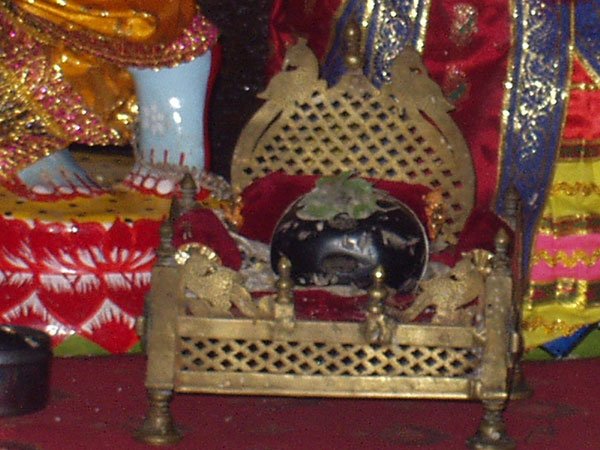
The village temple is were Lord Caitanya, Lord Nityananda, and Sri Advaita would meet to discuss how to spread the sankirtan movement. Srila Prabhupada would visit this temple during his grhastra days and later as a sannyasi and pray for the blessing to spread the sankirtan movement in the west. So, this is a very powerful and Krsna Conscious location. I'll tell that story at the end of this article.
An interesting point I like to make is that this Nrsmha Sila actually brought Radha and Krsna together as Sri Caitanya Mahaprabhu. This Sila gave birth to the Sankirtan movement that we all are participating in today. Sri Advaita Acharya offered tulasi and ganges water and begged for the appearance of the Lord to the Nrsmha sila. That sila fullfilled the request and cause the descent of Mahaprabhu. That is a very special saligram. I offered my obeisances and beg for empowerment to spread Krsna Consciousness in the west from that Saligram. I prayed at both temples.
I hope some others can shed more light on the history of this saligram. The pujari in the city said that an ISKCON matajai spent a few months there compiling a research paper for her Doctorate in Religion in 2002 or so. He showed us the book but we didn't have time to read much. I only had a short time to visit Mayapur this year (2005) and could not return to discuss more with the pujaris.
During the 1940's and 50's, the pujari noticed that one grhastha Bengali devotee used to come to the temple quite regularly. He was dressed in a white khadi dhoti and kurta and he always came alone. He would sit in the back of the mandira without speaking, and he would chant hari-nama on his mala very quietly and deeply. He would come on weekends, usually once every month or two. After chanting there for many hours, he would always thank the pujari and leave. Since his devotion was solitary, the pujari never disturbed him. The pujari would notice that while he chanted, his eyes would be full of tears and his voice would choke up.
Then for a long time, he did not come back. However, the pujari remembers that in August of 1965, he saw a saffron-clothed sannyasi sitting in the back of the mandira. He recognozied him to be the person from before. Again he sat for a long time chanting Hare Krsna. He was weeping unabashedly even more than before while he took the Holy Name. Finally, as evening came, he paid his dandavat pranama for a long time. When he arose, he came up to the pujari and thanked him for his seva at Advaita Bhavan. The pujari asked him, "Who are you? I remember you from so long ago." He replied, "My name is Abhaya Caranaravinda Bhaktivedanta Swami Maharaja. I am an unworthy disciple of His Divine Grace Srila Bhaktisiddhanta Sarasvati Thakur, Srila Prabhupada, my divine master. I have been coming here for such a long time becasue my gurudeva has given me an impossible mission. His desire was for me to go across the ocean to the Western countries and spread the sublime teaching of Sri Caitanya Mahaprabhu. I have not known how this mission of his will be successful, so I have been coming here to this special house of Advaita Acarya, where he, Nityananda Prabhu, and Sri Caitanya Mahaprabhu would gather to plan the sankirtana movement. It was here that they launched the inundation of love of God that swept India and continues to this day. Thus, I have been praying very earnestly here that they will all give me their mercy and somehow they will empower me and guide me. I want to satisfy my gurudeva's desire, but I am feeling unqualified to do this."
As he was speaking to the pujari, he saw tears falling down on his cheeks again. Then he continued, "Tomorrow I am leaving for Calcutta to go upon a ship across the ocean to America. I do not know what will befall me there, but I am praying most earnestly here for help." Then, he very humbly asked the pujari for his blessings.
It was a few year later that the pujari began to noticed, for the first time, white Vaisnavas coming to Advaita Bhavan. They were wearing dhotis and saris and chanting on tulasi-mala. The pujari never spoke to any of them but then one of them gave him a "Back to Godhead" magazine from America. As the pujari was looking through it, he saw a painting of Srila Prabhupada label as the Founder-Archaya who brought Krsna Consciousness to the West. It was a picture of his old friend, Bhaktivedanta Swami, who had come and prayed there so many times before. He then realized that he had actually accomplished that impossible mission of his gurudeva. He saw that it was indeed he, starting alone and without pretense, who had accomplished this glorious miracle against all odds. As soon as the pujari saw this, he came to the temple in Mayapura to tell this information.
Jagaguru Srila Prabhupada KI JAYA!!!!
Your Servant,
Sikhi Mahiti das ACBSP

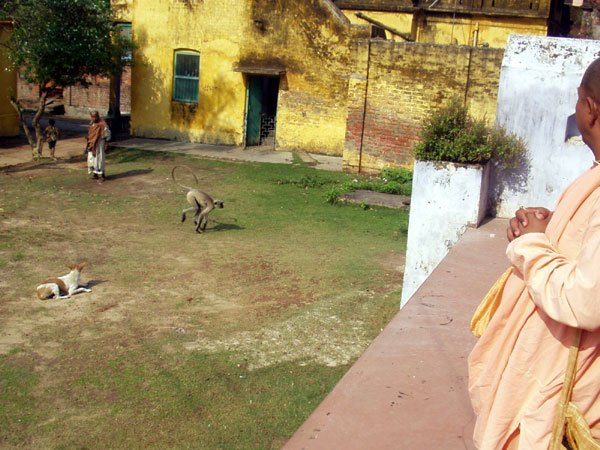
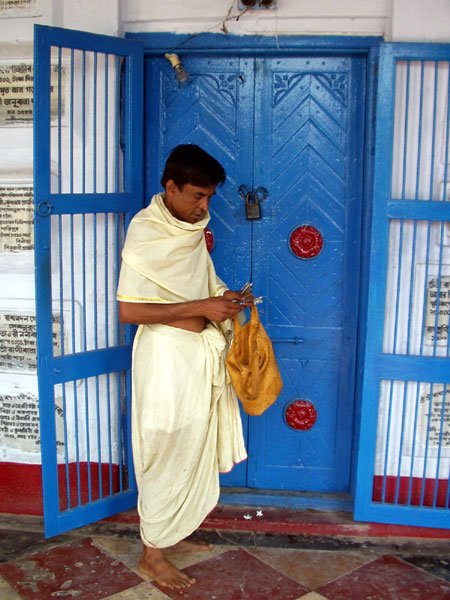
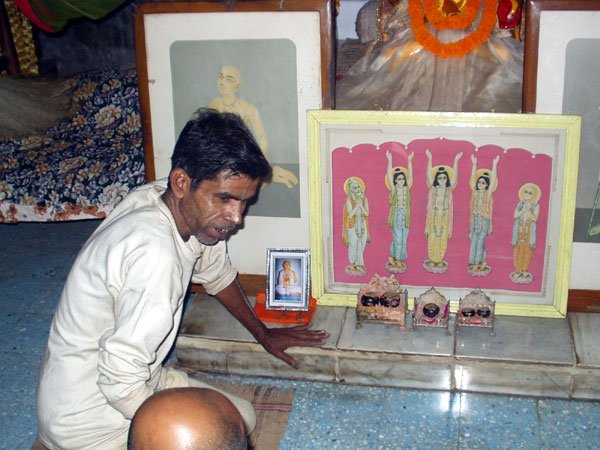
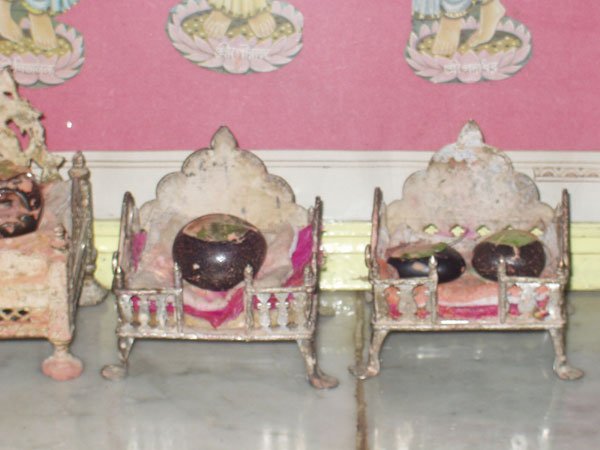
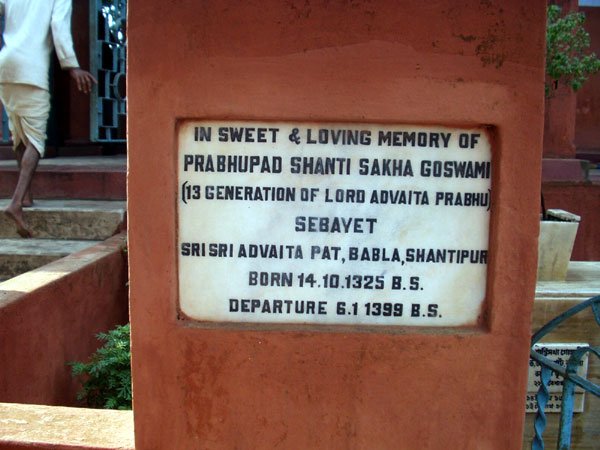
![[Bhaktivedanta Memorial Library Logo]](../grfx/bml_logo.gif)